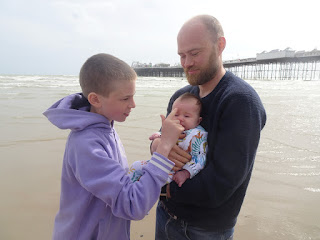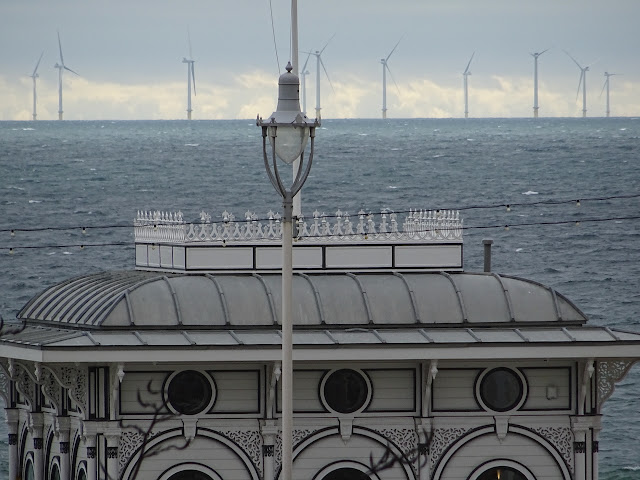Here is the eight of 25 stained glass window designs on the Palace Pier which AI and I are using as inspiration for some of these BrightonBeach365 daily posts - see Stained Glass Window 1 for background. This image features two jockeys riding brown horses, both in racing posture. The jockey in the foreground is wearing a pink top and white pants, while the jockey behind is dressed in a red top and white pants with a yellow helmet. The background shows stylised green fields, a blue sky, and white clouds, with a prominent red circle in the sky, possibly representing the sun or a race marker.
A limerick starter
Two jockeys sped off in a dash,
Each hoping to pocket the cash.
Their horses, inspired,
Look secretly wired -
Did someone spike oats with panache?
The Brighton Fixer (in the style of Dick Francis)I saw it again this morning. The stained glass roundel above the old betting shop door on Brighton seafront. Two jockeys, mid-gallop, frozen in coloured glass - one in rose, one in red. Odd thing is, I know them both.
The one in rose? That’s Charlie Fielding. Dead two years now - trampled under six hooves at Plumpton. Officially an accident. Unofficially, I never bought it. And the other jockey? I’d bet my last losing slip it’s me.
I retired after Charlie’s death. Couldn’t ride without seeing him in my periphery. But I still walked the beach every morning, boots crunching shingle, past the piers and peeling Victorian arches. That’s when I noticed the stained glass, installed suddenly in the old Seagull Tote, long closed and boarded until recently. No artist’s name. No sign. Just that image - and the past, staring back at me.
That morning, a figure was watching from inside. A flicker behind the coloured panes. Curiosity overrode my better sense. I crossed the promenade and pushed through the warped wooden door. It creaked open.
Inside was dim, the salt air clinging to dusty formica. A single bulb buzzed above a folding table. And sitting at it, with a bookmaker’s ledger open in front of him, was Julian Kemp.
He’d trained both Charlie and me once. Slick, silver-haired, with a fondness for quiet threats and sudden debt. He didn’t look surprised to see me.
‘Thought the window might bring you in,’ he said, without looking up. ‘It’s good, isn’t it? Custom commission. Memory’s a powerful lure.’
I didn’t answer. My eyes scanned the room. Beneath the table: a floorboard pried loose. Inside, stacked neatly - old betting slips, laminated, coded. Duplicates of Charlie’s last race. And photos. Surveillance. One showed Charlie arguing with Kemp, another showed Kemp at a late-night meeting with a farrier who’d been banned from every course south of the M25.
Charlie had known something. Tried to back out. And now the glass showed him forever racing to a finish he never reached.
‘You killed him,’ I said quietly.
Kemp smiled like a man remembering a clever joke. ‘He wouldn’t play ball. But you? You stayed loyal. Fancy another ride, Ben?’
He nodded toward a fresh set of silks on a hook: rose pink, like Charlie’s.
I picked them up, felt the weight. Then turned, sharp and fast, and cracked the brass hook against Kemp’s temple. He crumpled silently.
I left him tied with his own power cable, his precious stained glass glowing behind me as the dawn caught the curve of the beach.
I’d call the police once I reached the pier. First, I stopped and looked out to sea.
This time, I wouldn’t be part of the finish line.


















